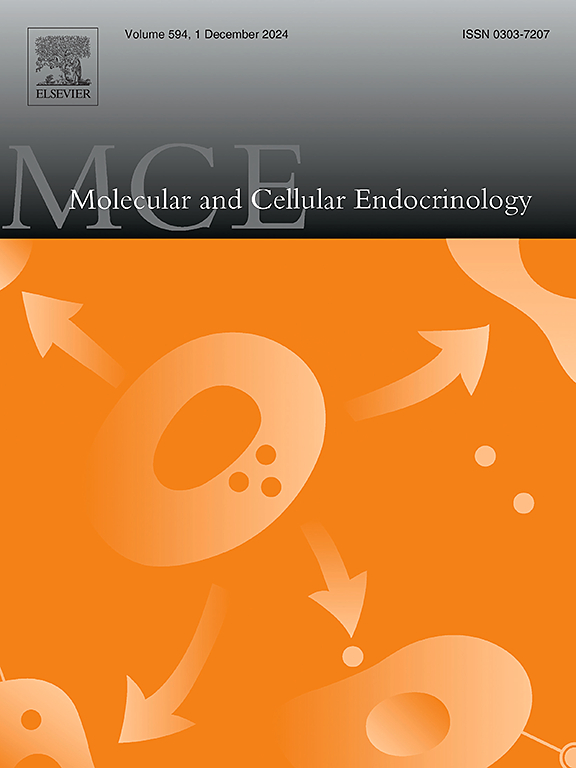毒死蜱在小丑鱼变态过程中的多级效应。
IF 3.6
3区 医学
Q2 CELL BIOLOGY
引用次数: 0
摘要
沿海水域的化学污染,特别是农业有机磷径流造成的化学污染,对包括珊瑚礁在内的海洋生态系统构成重大威胁。毒死蜱(CPF)等污染物广泛用于农业,对海洋生物和人类产生不利影响。在本文中,我们研究了CPF对珊瑚鱼模型小丑鱼(Amphiprion occellaris)变态的影响,重点研究了甲状腺激素(TH)信号通路的破坏。我们的研究结果表明,通过降低TH水平,CPF暴露会损害小丑鱼幼虫的特征性白色带的形成,这表明了变态的进展。有趣的是,TH治疗可以挽救这些效应,在CPF效应和TH破坏之间建立直接的因果关系。暴露在CPF下的幼虫在变态过程中发生的体型变化也受到影响,CPF处理的幼虫的体型变化比对照组的要慢。此外,转录组学分析阐明了CPF对TH信号通路所有组分的影响。此外,CPF对胆固醇和维生素D代谢、DNA修复和免疫产生全身影响,突出了其更广泛的不依赖于th的影响。在海洋生态系统中,特别是在珊瑚礁中,污染物往往被忽视。开发和加强珊瑚鱼模型,如ocellaris Amphiprion(居维叶,1830年),可以更全面地了解化学污染如何影响这些生态系统。这种方法为鱼类变态过程中CPF毒性的复杂机制提供了新的见解,揭示了环境污染物对海洋生物的更广泛影响。本文章由计算机程序翻译,如有差异,请以英文原文为准。

The multi-level effect of chlorpyrifos during clownfish metamorphosis
Chemical pollution in coastal waters, particularly from agricultural runoff organophosphates, poses a significant threat to marine ecosystems, including coral reefs. Pollutants such as chlorpyrifos (CPF) are widely used in agriculture and have adverse effects on marine life and humans. In this paper, we investigate the impact of CPF on the metamorphosis of a coral reef fish model, the clownfish Amphiprion ocellaris, focusing on the disruption of thyroid hormone (TH) signalling pathways. Our findings reveal that by reducing TH levels, CPF exposure impairs the formation of characteristic white bands in clownfish larvae, indicative of metamorphosis progression. Interestingly, TH treatment can rescue these effects, establishing a direct causal link between CPF effect and TH disruption. The body shape changes occurring during metamorphosis are also impacted by CPF exposure, shape changes are less advanced in CPF-treated larvae than in control conditions. Moreover, transcriptomic analysis elucidates CPF's effects on all components of the TH signalling pathway. Additionally, CPF induces systemic effects on cholesterol and vitamin D metabolism, DNA repair, and immunity, highlighting its broader TH-independent impacts. Pollutants are often overlooked in marine ecosystems, particularly in coral reefs. Developing and enhancing coral reef fish models, such as Amphiprion ocellaris (Cuvier, 1830), offers a more comprehensive understanding of how chemical pollution affects these ecosystems. This approach provides new insights into the complex mechanisms underlying CPF toxicity during fish metamorphosis, shedding light on the broader impact of environmental pollutants on marine organisms.
求助全文
通过发布文献求助,成功后即可免费获取论文全文。
去求助
来源期刊

Molecular and Cellular Endocrinology
医学-内分泌学与代谢
CiteScore
9.00
自引率
2.40%
发文量
174
审稿时长
42 days
期刊介绍:
Molecular and Cellular Endocrinology was established in 1974 to meet the demand for integrated publication on all aspects related to the genetic and biochemical effects, synthesis and secretions of extracellular signals (hormones, neurotransmitters, etc.) and to the understanding of cellular regulatory mechanisms involved in hormonal control.
 求助内容:
求助内容: 应助结果提醒方式:
应助结果提醒方式:


